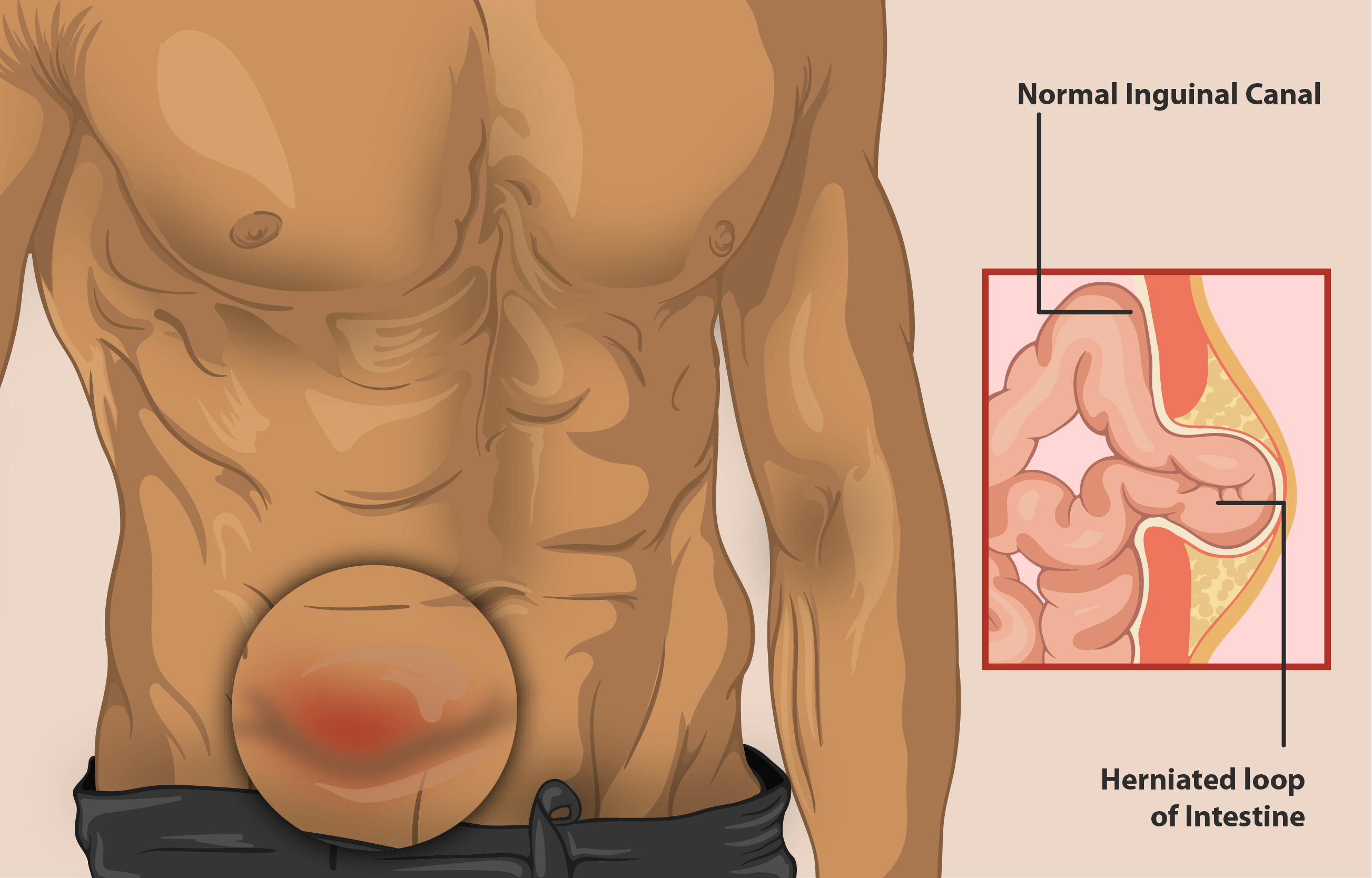Hernias affect millions of people each year, yet many don’t fully understand what they are or how to recognize them. A hernia occurs when an organ or tissue pushes through a weak spot in the muscle or connective tissue that normally holds it in place. While they can develop in various parts of the body, they most commonly appear in the abdomen, groin, and upper thigh areas. Understanding the different types of hernias and their symptoms may help you recognize when it’s time to seek medical attention.
What Is a Hernia?
Think of your muscles and connective tissues as a strong wall that keeps your internal organs in their proper places. When this wall develops a weak spot or tear, nearby organs or tissues can push through, creating a bulge under your skin. This bulge is what we call a hernia.
Hernias develop for various reasons. Some people are born with weak spots in their muscle wall, while others develop them over time due to aging, injury, or repeated strain. Heavy lifting, persistent coughing, obesity, and pregnancy can all contribute to hernia formation. The good news is that hernias are treatable, and recognizing the signs early may lead to better outcomes.
Which Types Are Most Common?
Hernias can develop in several areas of the body, but certain types tend to occur more often than others. Being aware of the most common types can help you recognize potential symptoms and seek timely guidance from your healthcare provider. The following are the hernias most frequently seen in adults:
- Inguinal hernias – These are the most common, especially among men. They occur when tissue, often part of the intestine, pushes through a weak spot in the lower abdominal wall or groin. Activities that increase pressure in the abdomen, such as lifting heavy objects, can contribute to their development.
- Abdominal hernias – This term broadly refers to hernias that appear anywhere along the abdominal wall, not just in the groin. These may result from natural weak points, prior surgeries, or persistent stress on the muscles. Common locations include the area around the belly button and sites of previous surgical incisions.
- Femoral hernias – These develop just below the groin, near the upper thigh. Femoral hernias are more common in women and can sometimes be harder to detect. Even though they are less common than inguinal hernias, they require attention because they can lead to complications if not addressed.
While these represent the most common types, hernias can also occur in other locations. Your doctor can help determine which type you might have based on the location and your symptoms.
What Are Hernia Symptoms?
Hernia symptoms vary depending on the type and size of the hernia. Some cause obvious signs, while others may be barely noticeable at first. Many people notice symptoms that come and go, especially during certain activities.
Inguinal Hernias
Inguinal hernias often cause a bulge in the groin area, accompanied by discomfort or pain that worsens when lifting, bending, or coughing. You might notice a heavy or dragging sensation in the lower abdomen, and in some cases, there may be swelling or pain around the testicles in men.
Abdominal Hernias
Abdominal hernias generally produce a bulge or lump anywhere on the abdomen. Symptoms include local pain at the site, especially when standing, coughing, or engaging in physical activity. Some people with abdominal hernias may also feel bloating or mild digestive discomfort.
Femoral Hernias
Femoral hernias are less common but can be serious. These usually appear as a small bulge in the upper thigh, just below the groin crease. Symptoms often include discomfort or pain in the groin or thigh, and they may become more noticeable when standing or straining. Femoral hernias have a higher risk of complications, so timely recognition is key.
Consult a Surgeon
If you suspect you have a hernia, don’t wait to seek medical evaluation. Early diagnosis and treatment can prevent complications and help you return to your normal activities more quickly. A qualified surgeon can assess your condition, discuss treatment options, and help you make informed decisions about your care. Schedule a consultation today to take the first step toward addressing your hernia and regaining your optimal health.

